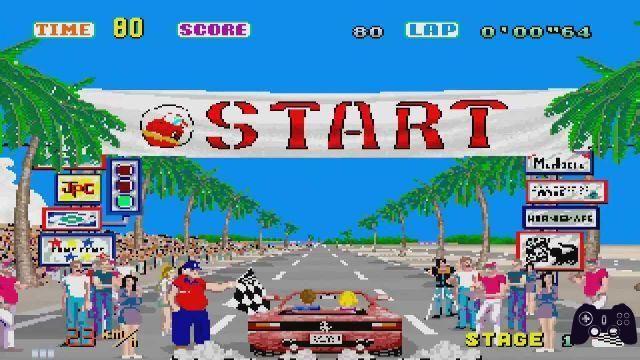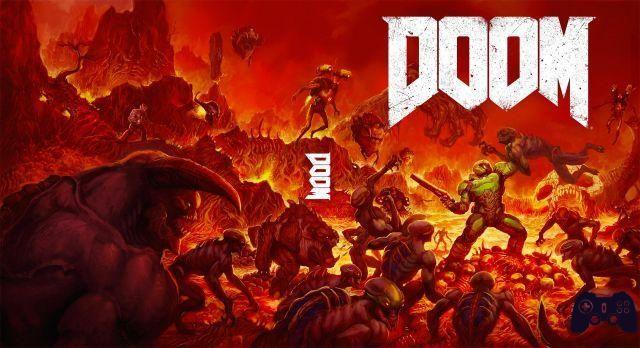
We tackled the DOOM saga (ahead of DOOM Eternal release) thanks to our collaboration with DLCompare, who provided the game's review code for our PC review.
As usual, our guidelines for the ethical purchase of video games in the dedicated News +.
Doom is THE series when it comes to video game history.
The saga of DOOM has always had more history than plot. And no, that capital letter is not there by chance. Behind the series that invented the first-person shooter, which for years was written "DOOM Clone", there are some of the most important pages in the history of video games. Because DOOM is an essential series for the growth of the movement. And even if you don't think it's a fundamental step of the video game as a cultural object. It is from Doom that eSports are born (in a sense) and it is from Doom and id Software that a lot of developers pass, directly and indirectly. Doom is a crossroads to greatness.
- AD (Forward Doom)
- Price of blood
- Consequences on the industry
- Doom saves the Gaming PC
- The legacy of Doom
The point of connection between very different personalities such as those of the two Johns of id Software, Carmarck and Romero, but also of American McGee and Gabe Newell. In short, Doom is a series that became Saga, of which today we try to tell part of the story.
AD (Forward Doom)
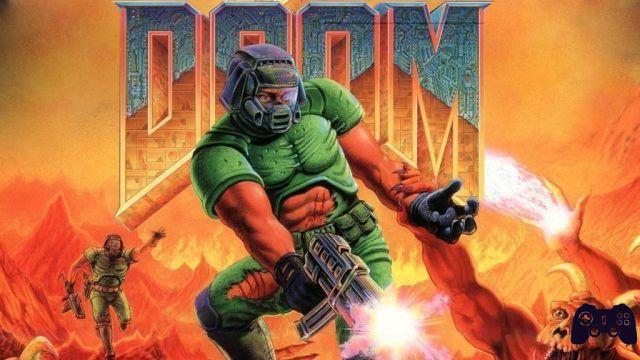
We cannot talk about Doom without mentioning the Father, without going forward Doom in short. The year is 1992, and id Software already has irremediably changed the face of the first person shooter thanks to his Wolfenstein 3D. The title had been able to bring the player's immersion to levels hitherto only touched upon. At the time there was even talk of "interactive experience" and also of "Virtual Reality", concepts that today indicate something else. The guys at id are preparing to double this success thanks to Spear of Destiny. It was a spin-off for the "classic" adventures market from Captain Blazkowicz which actually used the same engine as Wolfenstein 3D. Wolf3D in fact (like all id Software production up to that moment), used the shareware model, later also taken up for Doom.
Imeanwhile John Carmack, the mind behind the technological solutions that, until then, had allowed the company to continue to evolve video game after video game, did not remain idle. He continued to experiment with solutions - such as a gradual lighting system - which have the potential to lead to another technological leap. This is the beginning of the Doom Saga.
In short, the signs that it is time to finally dedicate oneself to a new project are all there ... But in which direction to move?
The first ideas were diametrically opposed. On the one hand, a return (with adaptation to three dimensions) of Commander Keen. On the other hand hovered the possibility of getting your hands on the Aliens license. Nothing will be done in both cases for equally opposite reasons. Carmack's new engine did not suit Kreen's more light-hearted and "innocent" tones (and the direction that the same id had decided to take, following Wolfenstein's wave). And working on a licensed title there decision-making and creative freedom of the house would have been limited.
The horse to bet on, borrowing the idea from a Dungeon & Dragons campaign played by id members, ultimately turned out this. Putting the demons against technology, packaging an experience halfway between the atmospheres of Aliens and the gore and splatter of La Casa 2. The inspiration for the name of the project would also come from Hollywood, more precisely from the film The color of money:
There is a scene in "The Color of Money" where Tom Cruise shows up in a billiard room with a custom cue inside a suitcase. "What do you have in there?" someone asks. "Doom," Cruise explains with a grin: this sentence, and the subsequent easy victory, was comparable to us presenting the game against far more titled producers.
John Carmack
Price of blood
The plot in a video game is like the plot in a porn movie - you expect it to be there but it's not that important
- John Carmack
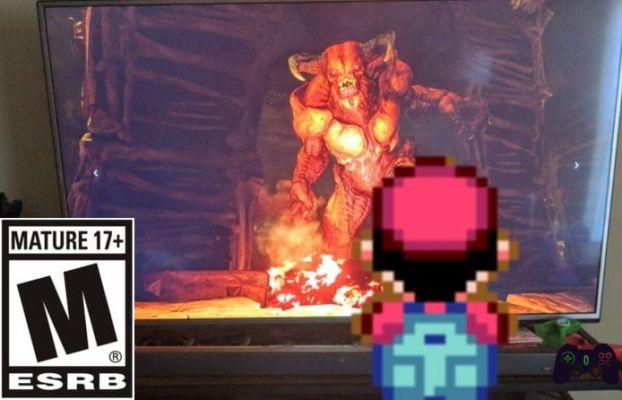
Developing Doom was definitely not a painless step for id Software. The decision to abandon Commander Kreen inevitably had a negative effect on it Tom Hall. The studio's Creative Director at the time will still decide to get back in the saddle to try and shape Doom. He didn't want to channel it into Wolfenstein's groove, offering an all-gameplay experience and with no space for narrative. With this spirit Hall began to devote himself to the drafting of the design document of the project, the so-called Doom Bible. in which plot, characters and motivations were detailed. Ample space also for some game mechanics, taken from role-playing games, such as the presence of power ups or a system of classes to choose from at the beginning of the experience.
None of this will find its place in the final version of Doom.
In fact, the vision of John Carmack, which he saw, was emerging more and more preponderantly the product almost "folded" to technology and developed to enhance its characteristics. Going to pack a frenetic experience capable of immersing those in front of the screen in the game. Focusing on the visual component and on the tense and sometimes claustrophobic atmospheres. And obviously sacrificing storytelling. Other artistic divergences, this time regarding Hall's levels for the title (who had taken the task of studying the architecture of some military bases too literally, according to some team members), led to the inevitable break. Hall left id Software, leaving the burden of making the final levels of Doom on the shoulders of John Romero and Sandy Petersen, hired to replace Hall.
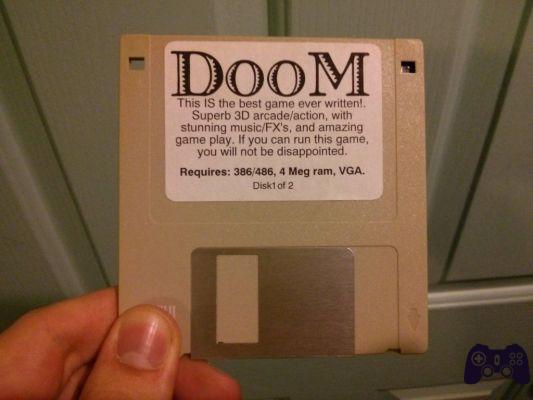
Doom is also a child of Carmack and Romero's Hacker ethics
The diatribe on the approach to modsomehow it did not lead to any casualties, but it was no less fought for that. The "two Johns" (Carmack and Romero), also due to their background as programmers, had a decidedly open position on the subject and were in favor of modifiability. The heads of commercial aspects of id were as concerned about the possible lost earnings as they were about the legal implications of the matter. Anyway Doom was developed to do not complicate life too much for aspiring modders, thanks to a file-based system with the WAD extension (acronym for “Where are All Data?”). The WADs allowed an easier alteration of the assets without the risk, unlike what could happen with other products, of irreparably damaging the software.
The users responded very positively, even releasing several utilities that simplified the modification of Doom and managed to get even deeper, going to alter the mechanics and behavior of the game, not limiting the changes to simple aesthetics.
Even for a fee, as long as these were not compatible with the Shareware version of the title. And of course that it was clearly specified that they were not official id Software products. It is one of the key reasons behind the success of Doom and the other great saga of id Software, but we will talk about Quake later ...
Consequences on the industry
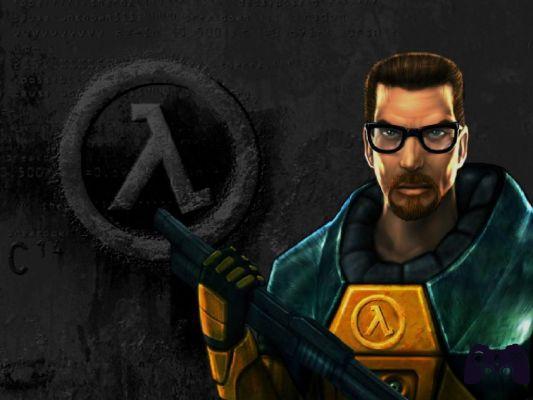
Fast forward to 1995. Doom, also thanks to its direct following, has become a real mass phenomenon. The id Software child prodigy is very playful, especially when it comes to competitive multiplayer modes. Thanks to Deathmatch, a term coined by Doom, pits players against each other in tournaments and competitions. A seed whose buds are still well imprinted in the DNA of the video game, just think of the eSport phenomenon. Services such as DWANGO (“Dial-up Wide-Area Network Game Operation”) were born, which at the cost of a fee made it possible to network games between players very distant from each other. In an era where the Internet hadn't yet caught on, it's a strong sign of just how powerful the Doom saga has become.
But the most obvious symptom of Doom's success is made clear by the proliferation of so-called "Doom Clones". Label that in more recent times will be replaced with "First Person Shooter" (or First Person Shooter, if you prefer). Rise of the Triad, which ironically counted Tom Hall in its ranks after being fired. Dark Forces, developed by LucasArts and set in the Star Wars Expanded Universe. Marathon, which bears the signature of another great name of the genre such as Bungie. Products competed for public attention with titles developed through Doom Engine, licensed by id to third-party Software House. Strategy antisegnana to Epic and its Unreal Engine.
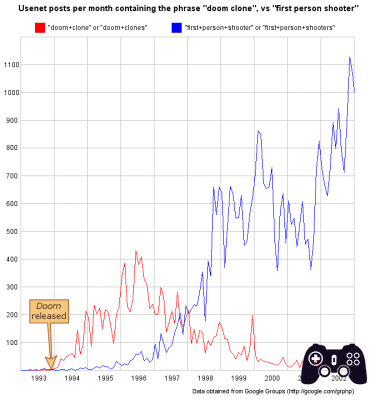
Doom saves the Gaming PC
Doom gets to be more popular than Windows 95
In '95, according to an estimate, Doom was more popular than Microsoft's latest operating system, Windows 95. Despite the huge advertising campaign set up by the Redmond house. One of the obstacles in the way of Windows 95 was just represented by the games. There was in fact a strong dependence on the hardware, and even differences in the components not so marked could make the difference between a crash and a start. In short, it was necessary to make sure that the transition to the new OS was as painless as possible for the developers. The problem was solved by creating DirectX technology. Technology that will then be advertised thanks to the conversion of Doom for Windows 95 (fully paid for by Microsoft), WinDoom.
Ironically, to take care of the port on behalf of the house in Redmond was a certain Gabe Newell. The same character who a few years later (we will get there shortly) will release on the market a product diametrically opposite to the id Software shooter. And it will contribute to the death of the Doom Clones.
Microsoft's plans for Doom were not limited to WinDoom. A commercial was also made where Bill Gates himself played the Doomguy. To then come out of the shot in first person armed with a rifle to illustrate how Windows 95 was the best home for video games. Obviously, taking the opportunity also to take out an IMP by telling him not to interrupt his speech.
The legacy of Doom

To learn more:
Doom
We have therefore seen how Doom managed to characterize the decade of its release. Defining and identifying a genre. Embracing the movement of mods and user-created content on a large scale for the first time. Managing to become a real transversal phenomenon, so much so as to force even the Microsoft of the golden years to "recruit" id Software to advertise and push their solutions (both among the public and among developers). But Doom's legacy doesn't stop with those years: as mentioned above, thanks to Deatchmatch the id Software shooter has planted the seeds of competition, and the first fruits could only be collected by id itself. The next step of the house will lead to the realization of Quake. The series that will give the La to the Arena genre of the First Person Shooter together with Unreal by Epic Games.
Quake is sort of the beginning of the end for id Software and the Doom saga

To learn more:
John Romero: the man who made us all his whores
Quake was originally conceived as a vastly different product. A sort of first-person RPG where the protagonist (Quake, in fact) was armed with a huge hammer and the elusive HellGate Cube. But at some point in development, the title turned brutally in a direction more in line with the house's previous jobs, becoming the fast-paced, adrenaline-pumping shooter that hit the market. To pay the price for this change of course, this time, was John Romero, who will then go in search of fortune by founding Ion Storm only to abruptly crash into Daikatana. The same id Software will remain in a certain sense "trapped" in the series, until the release of a Quake III Arena in '99. Completely dedicated to multiplayer and developed with independent maps between them, to reflect what the situation was within the development team.
Although Quake III was undoubtedly a very solid product (so much so that it is still remembered today as one of the highest points reached by the Arena subgenre) it was still the fifth game, in the space of five years, developed by id Software with all the typical features of an id Software product. All in a historical context that was beginning to find more and more taste in the stories that the videogame medium was gradually demonstrating it could tell.. As Valve's Half Life had shown the year before (here it is, Gabe Newell), a first-person shooter diametrically opposed to what Quake III Arena would have been (putting a strong emphasis on narrative). Not surprisingly, as you can see from the graph above, it is precisely in those years that the term "Doom Clone" begins to become obsolete and find less space.
While the void left by the label was filled with the definition of First Person Shooter.






